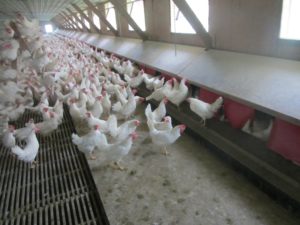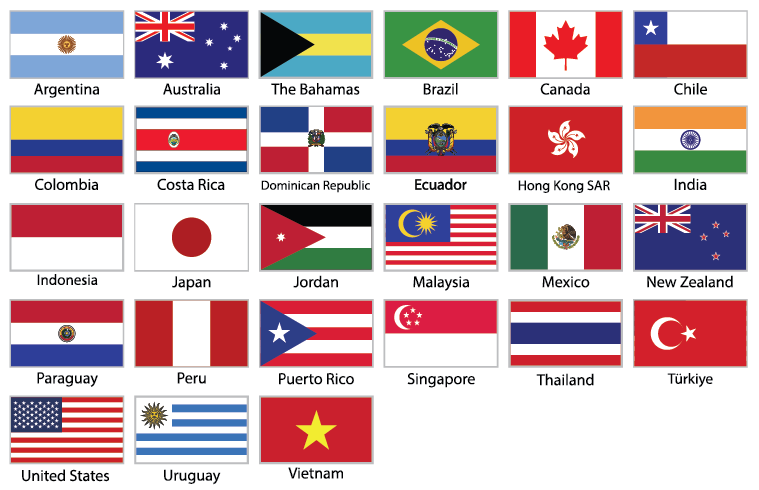 Cage-free means chickens are not kept in battery cages, and so can roam around in a barn. This sounds great, but chickens in factory farms are packed in tightly, often unable to move around, and are not guaranteed enrichments to ensure their well-being.
Cage-free means chickens are not kept in battery cages, and so can roam around in a barn. This sounds great, but chickens in factory farms are packed in tightly, often unable to move around, and are not guaranteed enrichments to ensure their well-being.
Laying hens in the Certified Humane program are raised under a set of standards developed by more than 40 animal welfare scientists and farm animal veterinarians from around the world. Here’s some of the standards of care for cage-free chickens created by these experts for the Certified Humane® program.
- SPACE: Certified Humane chickens must be raised with a minimum of 1.5 sq. ft. per bird in a barn. The bird is not confined to 1.5 sq. ft. It’s simply a formula that restricts the number of chickens that can be in a barn, and that allows hens to have sufficient freedom of movement to be able to stand normally, turn around, and stretch their wing without difficulty. To ensure that the maximum housing density is not exceeded, every farm must submit a plan for the inspector that indicates: 1) the total floor area available to the hens; 2) the space allowance; and 3) the maximum number of birds permitted within the house.
- ENRICHMENTS: Certified Humane® requires farms to provide enrichments for hens, like perches and dust bathing materials, in their barns. Hens use dust bathing materials to groom, socialize and relax. These are natural behaviors that hens in factory farms can never do.
- PERCHES: Hens must have access to perches and be able to wrap their toes around the perch and balance evenly in a relaxed posture for an extended period. They must also have sufficient space to be able to perch or sit quietly without repeated disturbance. Perches must be positioned to minimize dirtying of any hens below. Perches must have no sharp edges, be capped at the ends if hollow, be of a non-slip material, and be reasonably clean and dry.
- LITTER: Hens must be kept on, or have daily access to, well-maintained loose substrate/litter in order to dust bathe. Litter must not be allowed to become wet, infested with mites, or otherwise harmfully contaminated. Litter that is wet or otherwise contaminated must not be introduced into hen housing and must be replaced. Dust bathing is one of the “comfort behaviors” that hens use to keep their feathers clean and in good condition. The hen works the material (for example, wood shavings or sand) through her feathers using movements of her legs and wings, and then shakes the dust out. Maintaining good feather condition is important because it helps to protect the hen from injury and maintain her body temperature.
- AIR: Certified Humane® requires clean, well-circulated air in the barn – less than 10 parts per million of ammonia. This means the slightest hint of ammonia to the human nose is already too high for the chickens. High ammonia levels can cause blindness in hens and disease in their human caretakers.
- LIGHT: Certified Humane® requires periods of light and darkness to mimic periods of natural lighting. Light intensity is controlled as well. A minimum period of eight hours of continuous artificial light and/or daylight; and a minimum period of six hours of continuous darkness is required. Lighting patterns in all houses must be recorded and records must be made available to Humane Farm Animal Care during the inspection and at other times, upon request.
- FLOORING: Hen house flooring must allow for effective cleaning and disinfection, preventing significant buildup of parasites and pathogens. Concrete floors are preferable to dirt floors because they can be more effectively cleaned and disinfected.
- FOOD: Hens must have free access to nutritious feed appropriate to their age throughout the day, and must have daily access to coarse calcium, to aid with bone strength and shell quality. Animal by-products and growth promoters in their feed are prohibited. Antibiotics, including coccidiostats, may only be administered for therapeutic reasons and only under direction of a veterinarian.
- WATER: Hens must not have to travel more than eight yards (7.3 meters) in the house to reach feed and water, including in systems of more than one level. Particular attention must be given to the provision of feed and water in areas frequented by subordinate hens.
Why do we have cage-free standards? Humane Farm Animal Care provides farmers with cage-free standards to ensure hens raised in barns are offered sufficient space and enrichments to maintain their normal behaviors. Hens don’t like the wind, direct sunlight, the cold, snow and ice, so those living on farms in the northern regions of the U.S. and Canada will not go outside much during the winter months. Even during the summer, free-range hens, who go in and out of their house, spend a great deal of their time inside where they feel most protected.
Note: This is a quick overview of some of Humane Farm Animal Care’s standards for the Certified Humane Program. Humane Farm Animal Care has cage-free, free-range and pasture-raised standards. For a complete list of the standards for laying hens, please view Our Standards.




What Makes Certified Humane Cage-Free Eggs Different?
Posted: January 14, 2021 by OrganicThemesDev
Laying hens in the Certified Humane program are raised under a set of standards developed by more than 40 animal welfare scientists and farm animal veterinarians from around the world. Here’s some of the standards of care for cage-free chickens created by these experts for the Certified Humane® program.
Why do we have cage-free standards? Humane Farm Animal Care provides farmers with cage-free standards to ensure hens raised in barns are offered sufficient space and enrichments to maintain their normal behaviors. Hens don’t like the wind, direct sunlight, the cold, snow and ice, so those living on farms in the northern regions of the U.S. and Canada will not go outside much during the winter months. Even during the summer, free-range hens, who go in and out of their house, spend a great deal of their time inside where they feel most protected.
Note: This is a quick overview of some of Humane Farm Animal Care’s standards for the Certified Humane Program. Humane Farm Animal Care has cage-free, free-range and pasture-raised standards. For a complete list of the standards for laying hens, please view Our Standards.
Category: home page element